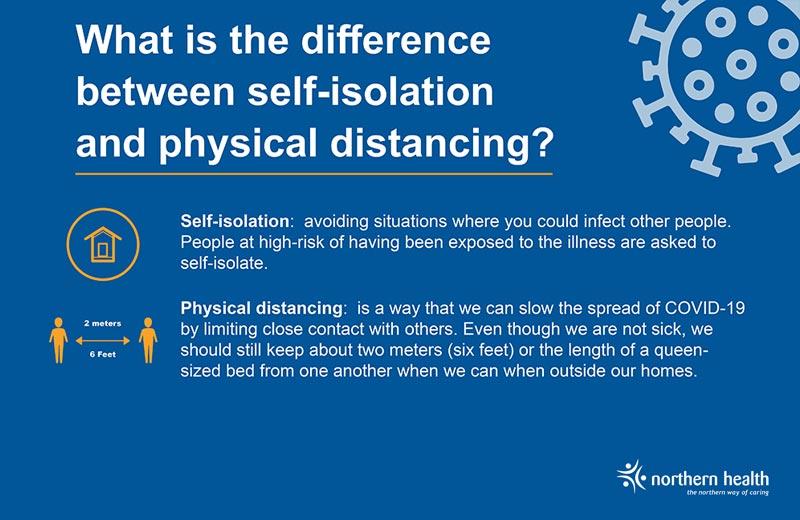Self-isolation means avoiding situations where you could infect other people. This can help prevent the spread of infections. Self-isolation lowers the chance of spreading the illness to other people. When you're exposed to an illness, there's the time between exposure and when you start to feel sick. This is called an incubation period. There is a small chance you can spread germs in the days before you feel sick.
People at high-risk of having been exposed to the illness are asked to self-isolate.
Plan ahead and prepare for what you will do if you or a family member becomes sick and needs care.
If you do need to go out for an essential reason, physical distancing is a way that we can slow the spread of COVID-19 by limiting close contact with others. Even though we're not sick, we should still keep about two meters (six feet) or the length of a queen-sized bed from one another when we can when outside our homes.
There are many ways to practice physical distancing:
- Limit activities outside your home
- Use virtual options to connect with others
- If you are out in public, try to keep two metres between yourself and others
- Keep your hands at your side when possible
- Stay home when you are sick
- Cough into your elbow or sleeve
- Avoid social activities in large gatherings
For more information
The BCCDC has more information, or you can call:
- NH Covid-19 Online Clinic & Information Line: 1-844-645-7811
- BC Govt. COVID-19 Helpline: 1-888-COVID19 or 1-888-268-4319














Comments